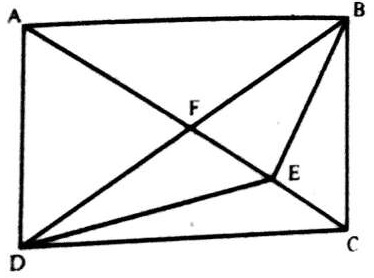Analytical Reasoning Questions with Solutions for Competitive Exams

Students are frequently facing problem while count geometrical figure from the complex figure in analytical questions because they get confused. Don't worry, It's not tough questions. In the beginning, you will feel difficult to solve analytical reasoning questions but if you preparing this topic properly, after some time you will solve easily these type of questions.
So, here are giving similar analytical reasoning questions with solutions in this blog which will help you to improve your performance as well as your confidence.
Check Analytical reasoning in Hindi questions here.
Analytical Problems with Solutions:
Q.1.
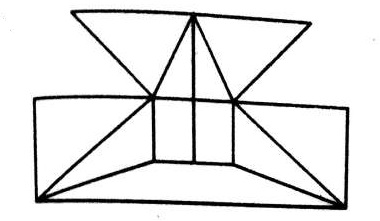
(A) 16
(B) 17
(C) 18
(D) 19
Ans . B
1. The figure may be labelled as shown. The horizontal lines are IK, AB, HG and DC i.e. 4 in number. The vertical lines are AD, EH, JM, FG and BC i.e. 5 in number. The slanting lines are IE, JE, JF, KE, DE, DH, FC and GC i.e. 8 in number. Thus, there are 4+5+8 17 straight lines in the figure.
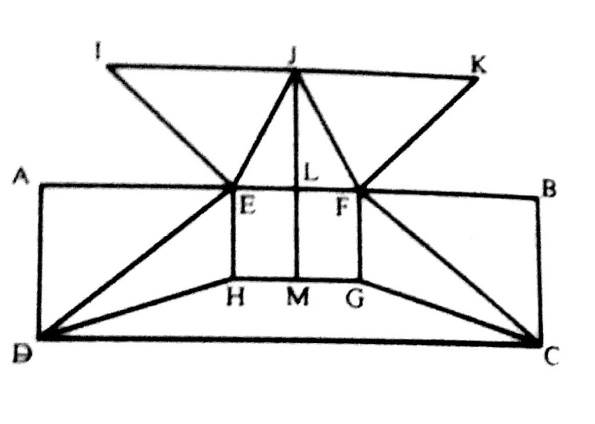
Q.2.
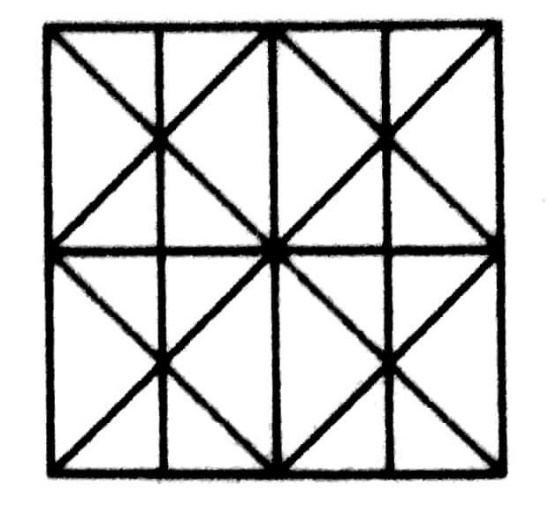
(A) 11
(B) 14
(C) 16
(D) 17
Ans . B
2. The figure may be labelled as shown. The horizontal lines are AK, BJ, CI, DH and EG i.e. 5 in number. The vertical lines are AE, LF and KG i.e. 3 in number. The slanting lines are LC, CF, FI, LI, EK and AG i.e. 6 in number Thus, there are 5+3 +6 14 straight lines in the figure.
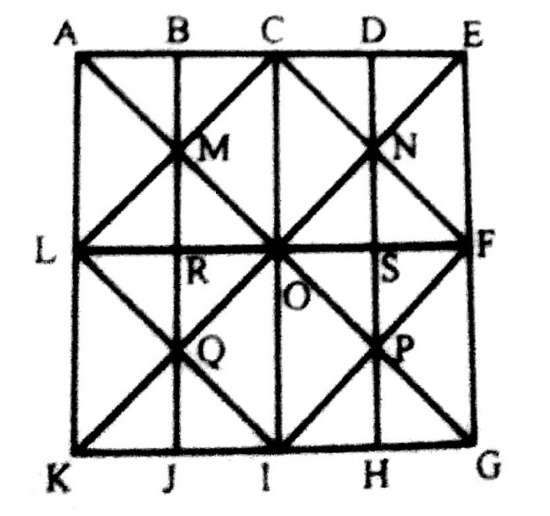
Q.3.
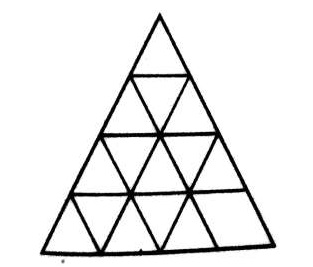
(A) 9
(B) 11
(C) 15
(D) 16
Ans . B
3. We shall label the figure as shown. The horizontal lines are DE, FH, IL and BC i.e. 4 in number The slanting lines are AC, DO, PN, IM, AB, EM and HN i.e. 7 in number. Thus, there are 4 + 7 = 11 straight lines in the figure.
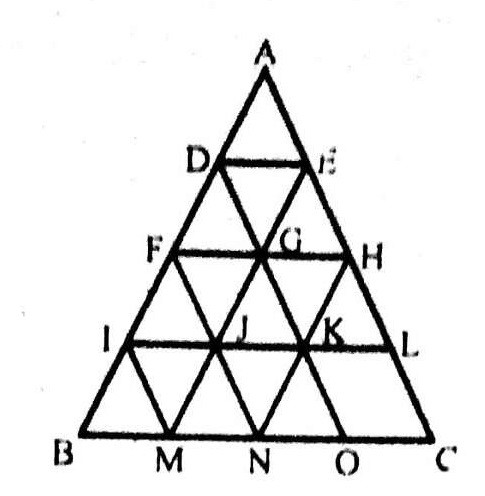
Q.4.
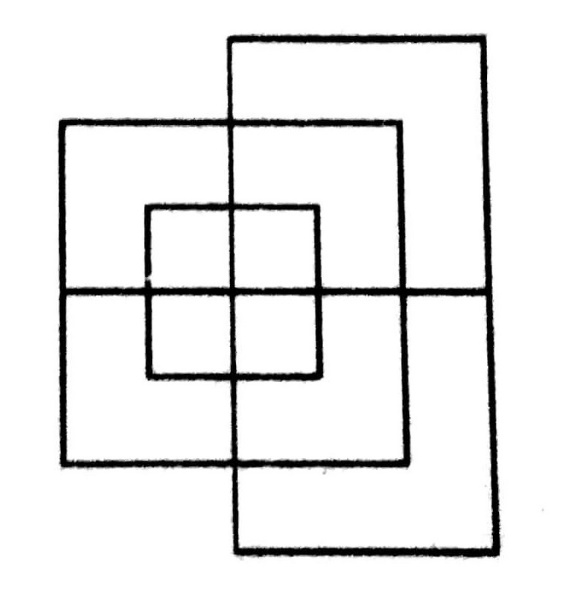
(A) 13
(B) 15
(C) 17
(D) 19
Ans . A
4. The figure may be labelled as shown. The horizontal lines are IJ, AB, EF, MN, HG, DC and LK i.e. 7 in number. The vertical lines are AD, EH, IL, FG, BC and JK i.e. 6 in number. Thus, there are 7 + 6=13 straight lines in the figure.
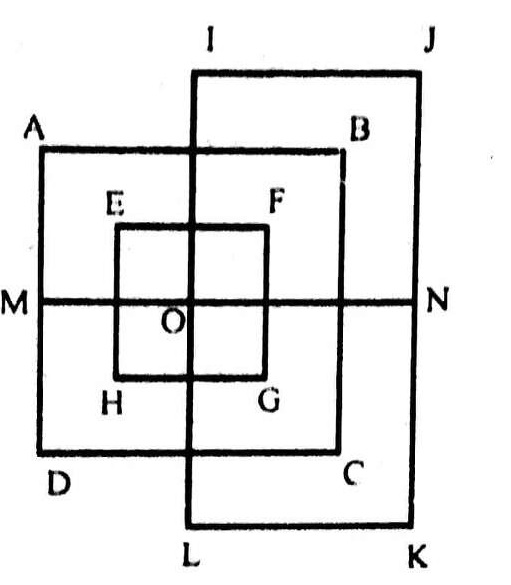
Q.5.
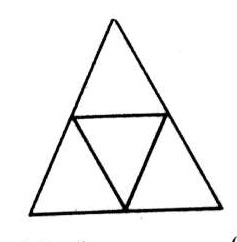
(A) 4
(B) 5
(C) 6
(D) 7
Ans . B
5. We may label the figure as shown. The simplest triangles are ADE, BDF, DEF and EFC i.e 4 in number. There is only one triangle ABC composed of four components Thus, there are 4+1 = 5 triangles in the given figure.
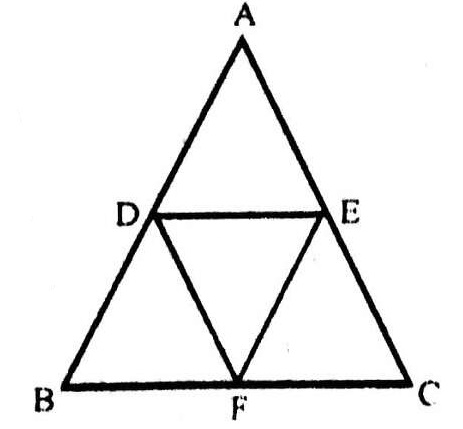
Q.6.
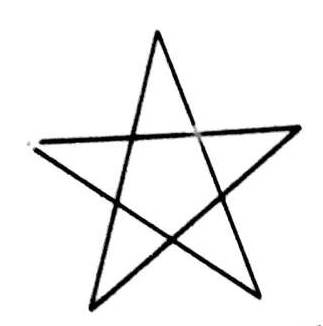
(A) 5
(B) 6
(C) 8
(D) 10
Ans . A
6. The figure may be labelled as shown. The simplest triangles are AJF, FBG, GCH, HDI and IEJ i.e. 5 in number. The triangles composed of three components each EBH, AIC, EFC, ADG and BJD i.e. 5 in number. Thus, there are 5+5 = 10 triangles in the figure.
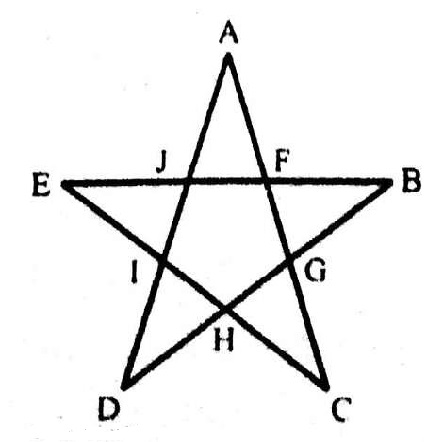
Q.7.
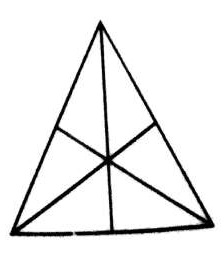
(A) 16
(B) 13
(C) 9
(D) 7
Ans . A
7. The figure may be labelled as shown. The simplest triangles are AGE, EGC, GFC, BGF, DGB and ADG i.e. 6 in number. The triangles composed of two components each are AGC, BGC and ABG i.e. 3 in number. The triangles composed of three components each are AFC, BEC, BDC, ABF, ABE and DAC i.e. 6 in number. There is only one triangle i.e. ABC composed of six components. Thus, there are 6+3+6+1=16 triangles in the given figure.
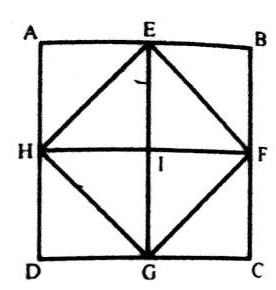
Q.8
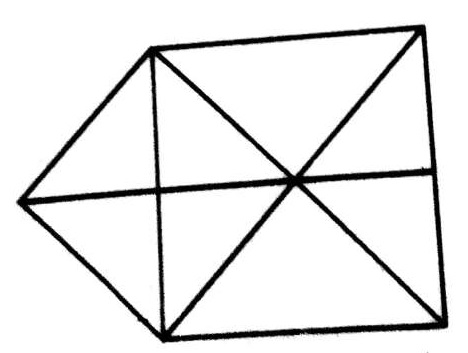
(A) 15
(B) 16
(C) 17
(D) 18
Ans . C
8. The figure may be labelled as shown. The simplest triangles are ABF, BFG, BCG, CGH GHD, GED, EFG and AFE i.e. 8 in number. The triangles composed of two components each are ABG, BGE, AGE, ABE and GCD i.e. 5 in number. The triangles composed of three components each are BCD, CDE, BED and BCE i.e. 4 in number. Thus, there are 8+5+ 4= 17 triangles in the figure.
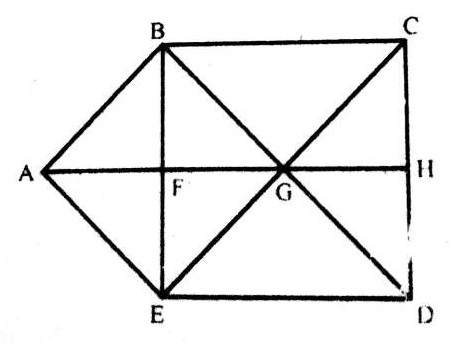
Q.9.
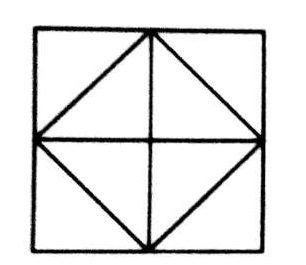
(A) 8
(B) 10
(C) 12
(D) 14
Ans . C
9. The figure may be labelled as shown. The simplest triangle are AEH, EHI, EBF, EFI, FGC, IFG, DGH, and HIG i.e. 8 in number. The triangle composed of two components each are HEF. EFG, HFG and EFG i.e 4 in number. Thus there are 8+4 = 12 triangle in the figure.

Q.10.
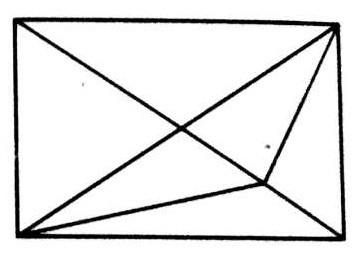
(A) 11
(B) 13
(C) 15
(D) 17
Ans . C
10. We may label the figure as shown. The simplest triangle are AFG, FEB, EBC, DEC, DFE and AFD i.e. 6 in number. The triangles composed of three components each are ADC and ABC i.e. 2 in number. There is only one triangle i.e. DBC which is composed of four components. Thus, three are 6+6+2+1 = 15 triangle in the figure
